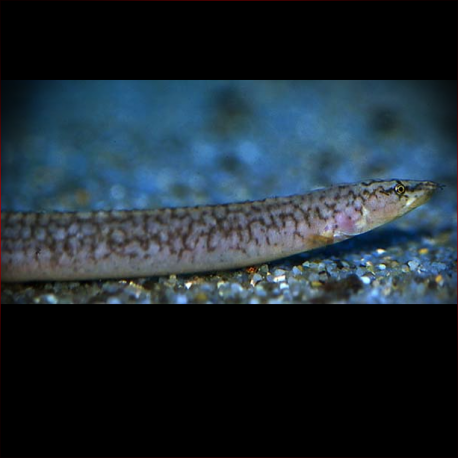More info
Datasheet
| Minimum Tank Size | 110 litres / 29.06 US gallons |
| Maximum Size | 22.0cm / 8.66inches |
| Temperature | 23°C / 73.40°F - 27°C / 80.60°F |
| Hardness | 8-25ºdH |
| pH | 8.0-9.5 |
General Description
Caecomastacembelus Albomaculatus, commonly known as the "spiny eel," is a unique and intriguing species belonging to the Mastacembelidae family. This fish is characterized by its benthic lifestyle, lack of a swim bladder, and stiffened dorsal rays, which give it the nickname "spiny eel." It is an oddball species, less visually striking than its close relative Aethiomastacembelus ellipsifer, and is rarely seen in the aquarium hobby.
Aquarium Setup
For optimal care, a tank with a capacity of at least 110 litres is recommended, with a specific setup tailored to mimic its natural habitat. Sand substrate is essential, as the spiny eel burrows into it frequently, necessitating the avoidance of gravel that could harm its delicate skin. Providing sheltered areas formed by piles of rocks is crucial, while ensuring that there are no strong currents in the tank. Water conditions should range from a hardness of 8-25 dH, pH levels between 8.0-9.5, and a temperature range of 23-27°C.
Behaviour
This species exhibits peaceful behavior towards tank mates too large to be considered food, making it suitable for a Tanganyikan community tank. However, it may display territorial tendencies towards conspecifics, necessitating a larger tank if multiple spiny eels are to be housed together.
Feeding and Diet
In the wild, Caecomastacembelus Albomaculatus preys on small fish; however, in an aquarium environment, it readily accepts dead alternatives. A varied diet including prawn, cockle, mussel, earthworms, and bloodworms can be offered to ensure proper nutrition.
Reproduction & Dimorphism
Currently, there is no documented evidence of successful breeding of Caecomastacembelus Albomaculatus in aquarium settings. Sexual dimorphism of this species remains unknown, presenting a fascinating area for future study.
Habitat and Distribution
Endemic to Lake Tanganyika, this species thrives in rocky areas along the lake's shoreline, reflecting its preference for rocky habitats in the wild. Its distribution is limited to this specific region, highlighting the need for careful consideration of its unique habitat requirements in an aquarium setting.

